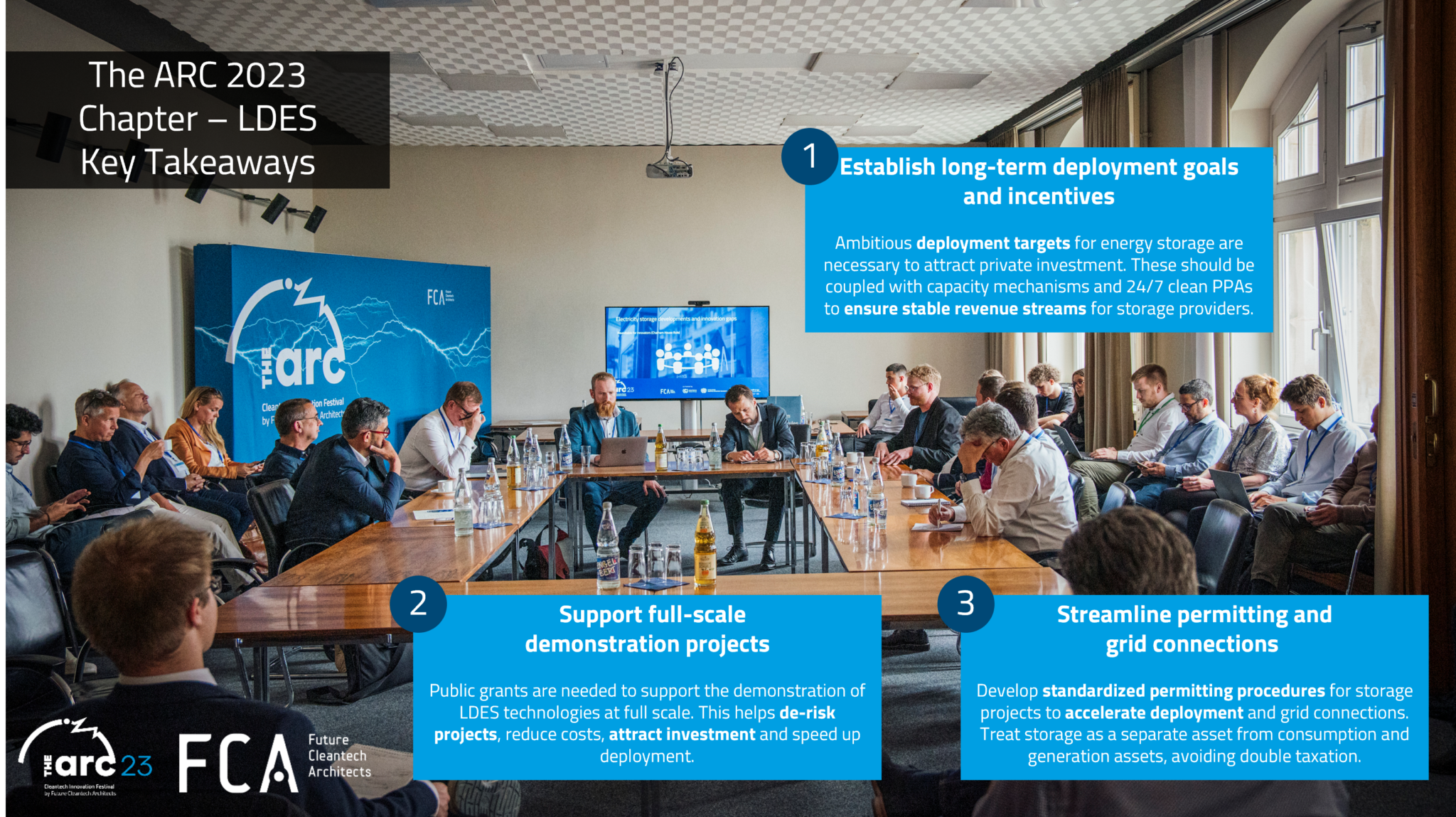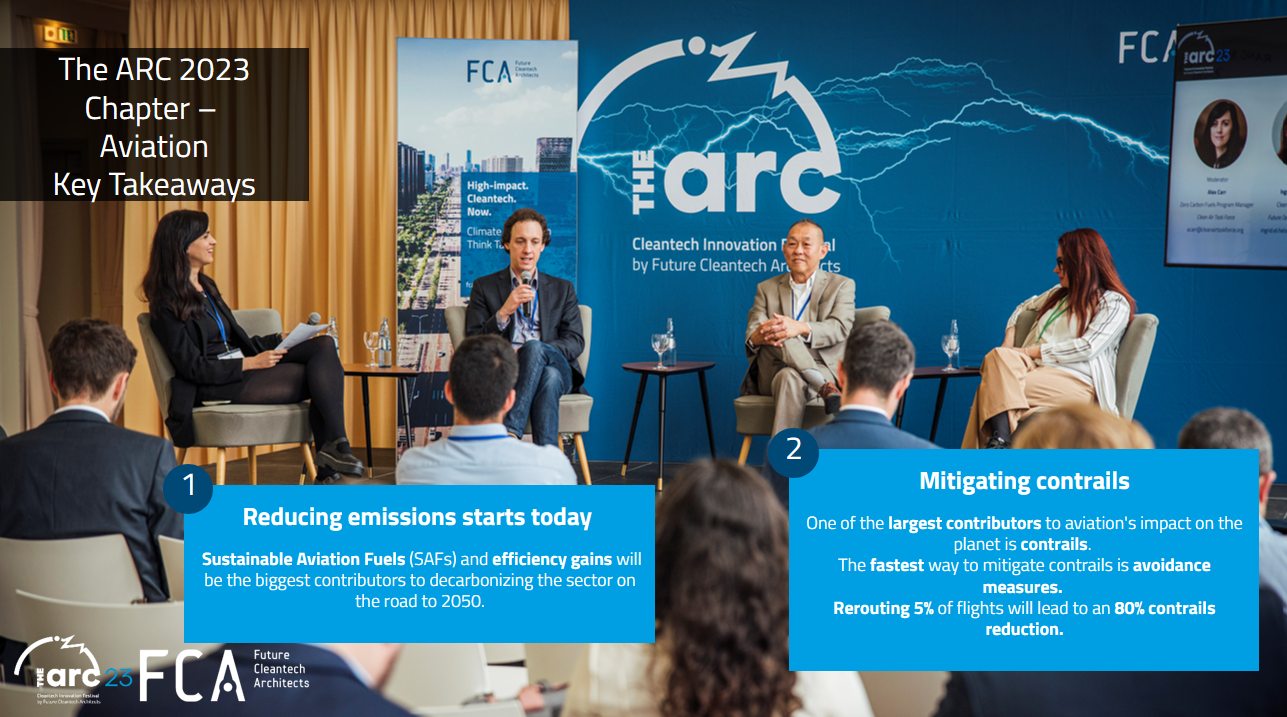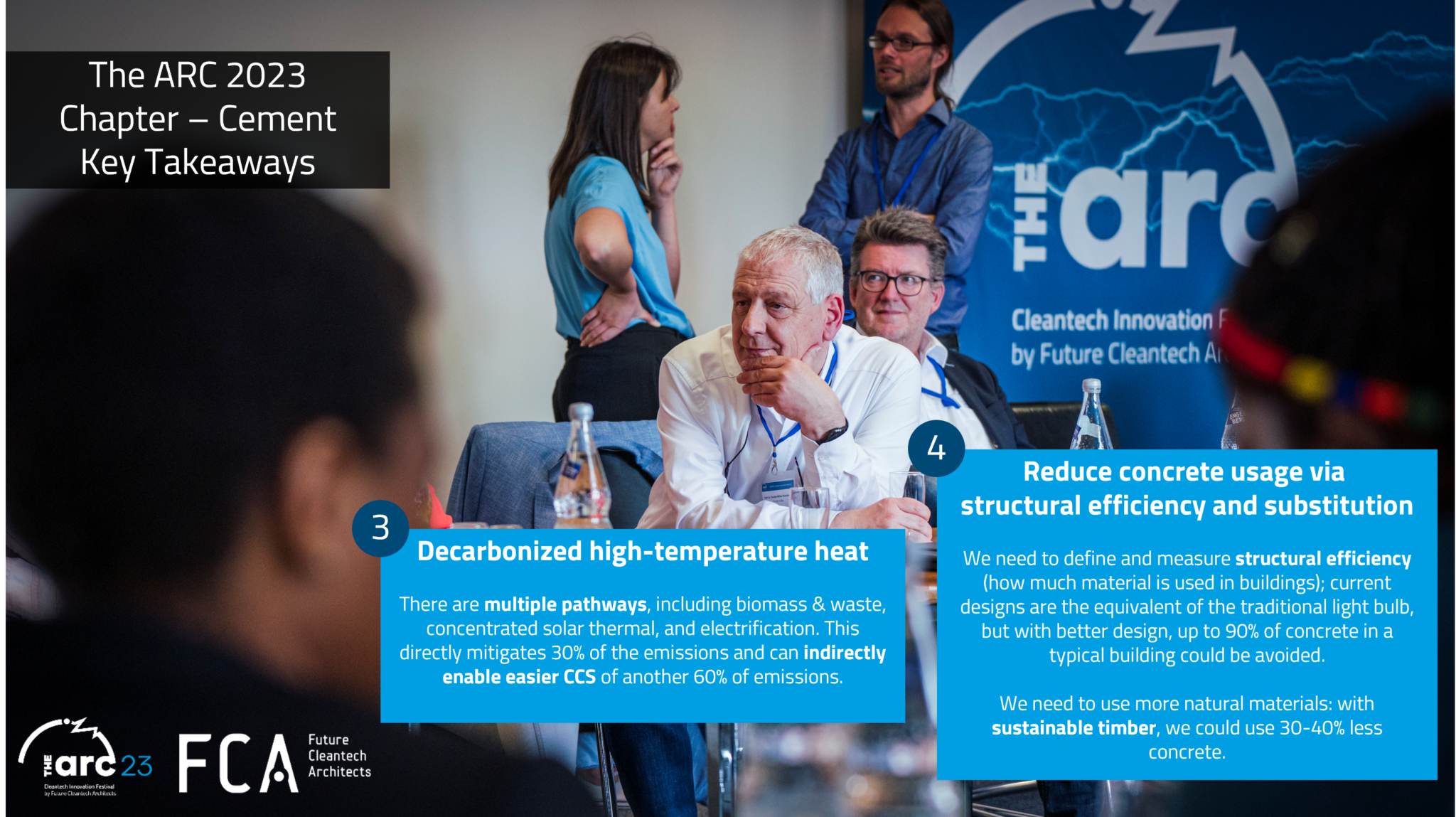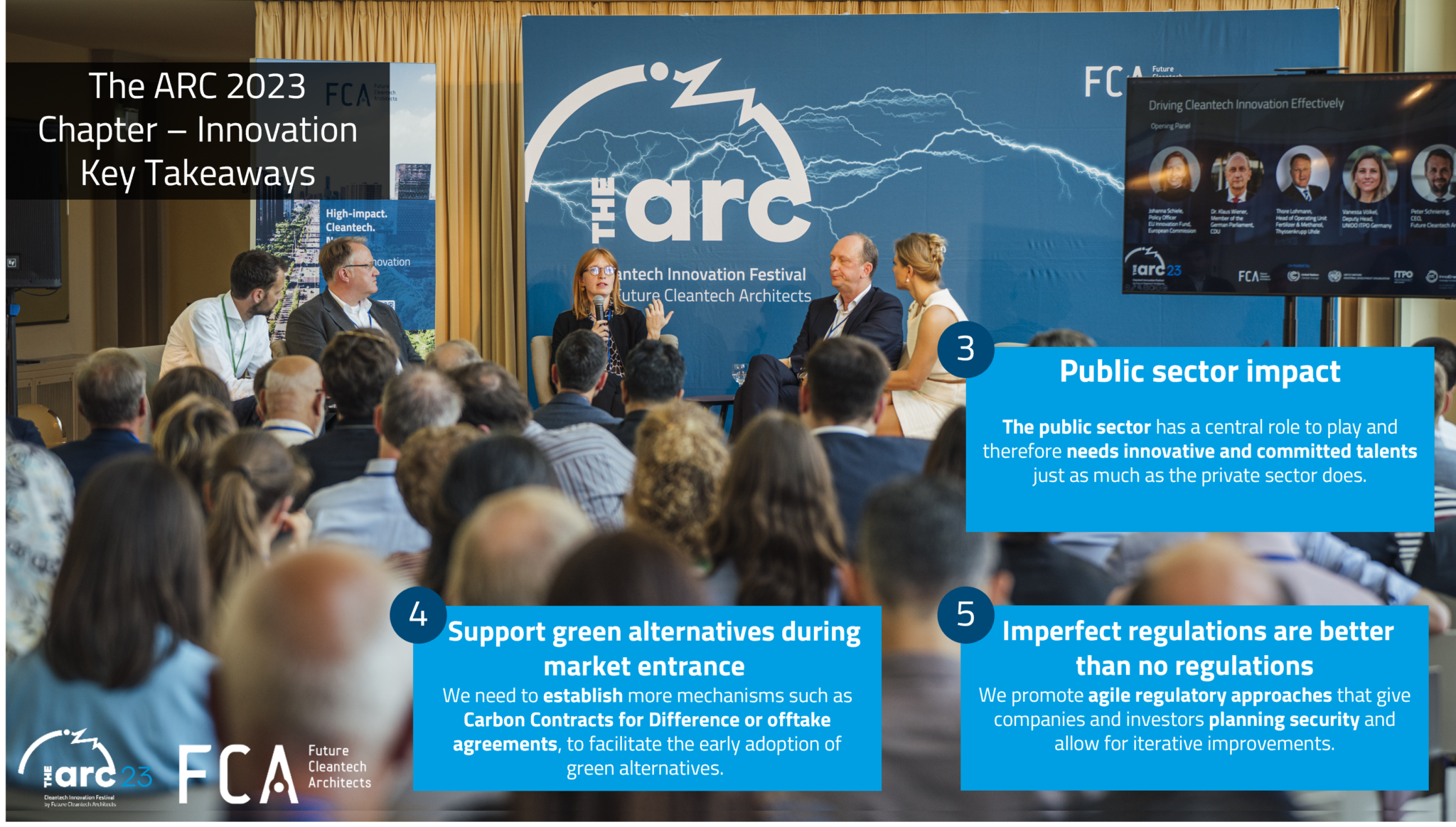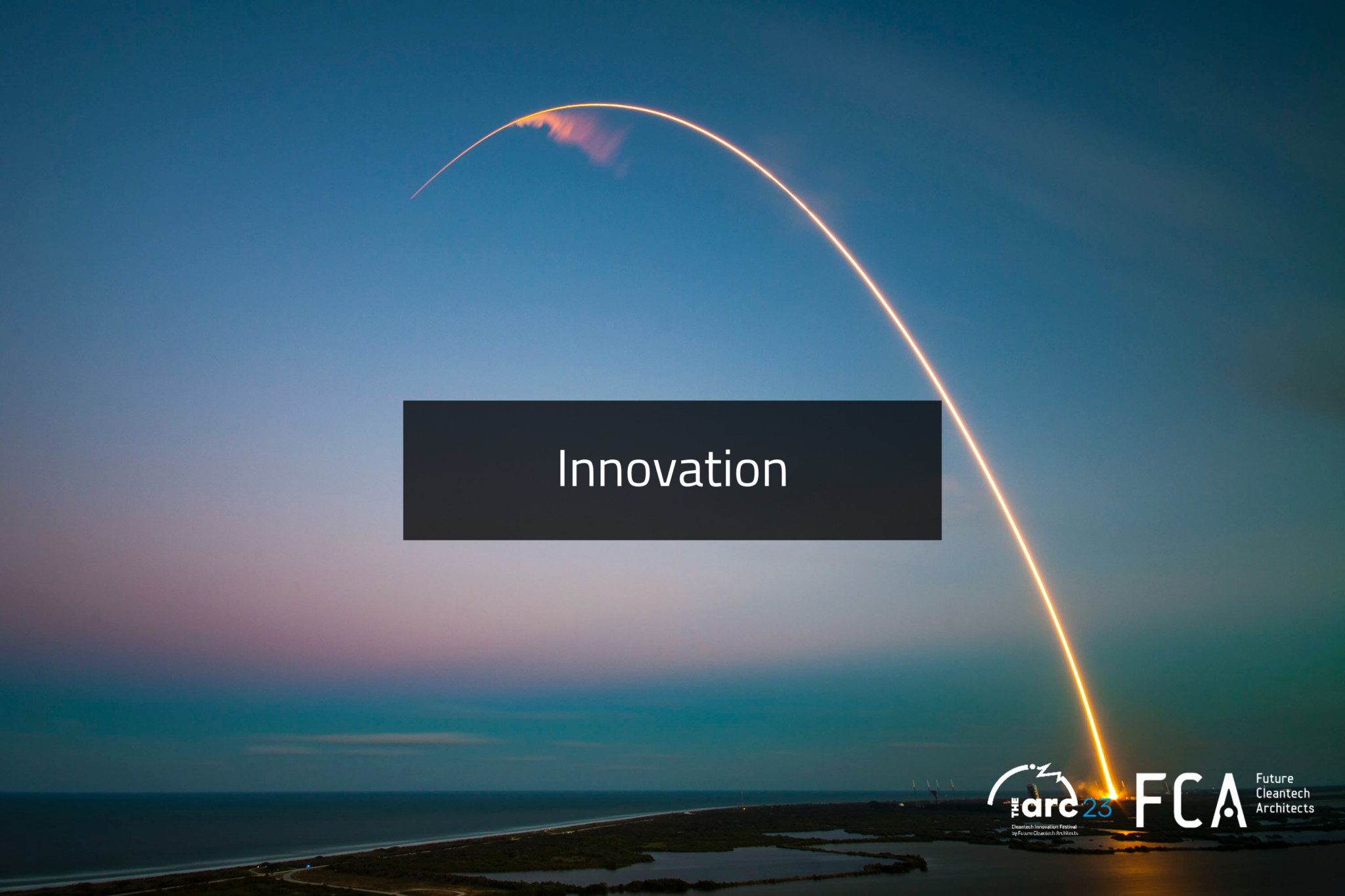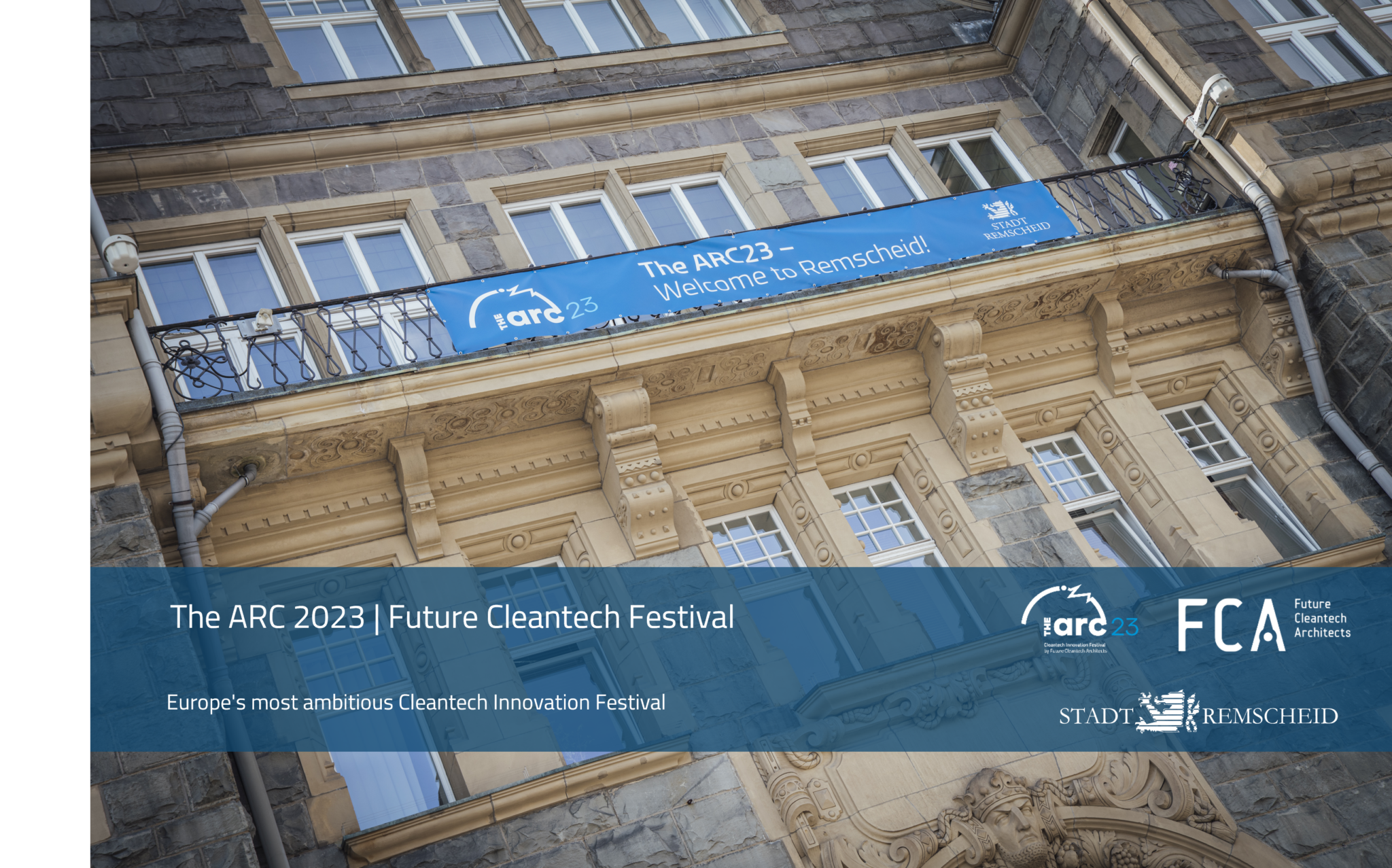The Future Cleantech Festival, The ARC 23 | Key Takeaways
Together with international partners and co-hosts from the public and private sphere, our Future Cleantech Festival brings together the brightest minds and best ideas in cleantech worldwide
During the Future Cleantech Festival, The ARC 23, we were glad to have over 250 representatives from the public sector, private industries, and research institutes from over 20 countries together discussing how to remove roadblocks and bridge the innovation gaps to reach net zero by 2050. See our key takeaways below!
Cleantech Innovation
Key takeaways
Promoting global climate change mitigation, economic growth, enhanced international competitiveness, and the eradication of energy poverty relies heavily on embracing social and technological innovation.
While national governments play a pivotal role in driving the global energy transition, it‘s crucial to recognize that fostering cleantech advancements requires more than just public investment in clean energy research, development, and demonstration. The global innovation system encompasses an intricate network of actors, institutions, and resources that must collaborate in synergy. To achieve optimal effectiveness, this system must fulfill a diverse array of functions, such as mobilizing resources, cultivating and disseminating new knowledge, facilitating entrepreneurial experimentation and the emergence of new markets, establishing social acceptance for novel technologies, guiding the pursuit of knowledge in specific directions, and facilitating knowledge transfer to interconnected industries.
Green alternatives still come at a premium during market ramp-up. We need to establish more mechanisms, such as Carbon Contracts for Difference or Offtake Agreements, to facilitate the adoption of green alternatives. Subsidies must be clearly limited in scope and time to avoid market distortions.
Innovations are often blocked by missing or outdated regulation. Agile regulatory approaches that give companies and investors planning security and allow for iterative improvements should be promoted. It is necessary to engage with innovators, think tanks,
and industry to ensure comprehensive and practical regulations
The public sector has a central role to play in driving the global energy transition and needs innovative and committed talents just as much as the private sector does. Smart policy making can set the direction for cleantech innovation.
The largest contributor to aviation’s warming impact on the planet are contrails (>50%). Airplanes are built to last; the average lifespan of an aircraft is over 25 years. Therefore, what is happening in the industry (as well as the type of aircraft leaving the production line) today have far-reaching implications when looking towards a net-zero 2050. Additionally, safety, testing, and verification are lengthy procedures. Such procedures need to be sped up and simplified to accelerate the entry of new technology onto the market, from new aircraft designs to new engine technologies, and help the sector decarbonize. One of the key solutions to help decarbonize the sector until 2050 are Sustainable Aviation Fuels (SAFs). However, in 2022 SAFs still made up less than 0.1% of the market share of jet fuel. Policy measures such as ReFuelEU, the EU Emissions Trading System (ETS), the UK SAFs mandate, as well as other similar initiatives are key drivers to decarbonize the sector.
The fastest way to mitigate contrails are avoidance measures. According to Breakthrough Energy, rerouting 5% of flights will lead to an 80% reduction in contrails and a marginal added cost of ~5$/ flight for an airline.
With SAFs being 2-5 times more expensive than conventional jet fuel, they could double ticket prices. Efficiency gains could then
counter increasing fuel prices and minimize the impact on the end consumer. Until the impact is minimized, the cost needs to be spread to those consumers who can afford it, as 1% of the global population is responsible for half of the industry’s emissions.
First, avoiding emissions through more sustainable practices, such as using alternative modes of travel. Second, reducing emissions through efficiency and cleaner technologies. Finally, offsetting remaining unavoidable emissions via Direct Air Capture (DAC).
International flights are responsible for approximately half of the sector’s overall emissions. Meaningful carbon-pricing mechanisms and phasing out of fossil fuel subsidies should be established to encourage both CO2 and non-CO2 emissions reductions worldwide. Carbon prices need to rise to adequately reflect the environmental damage that fossil fuel flights are causing. Global cooperation and coordination are needed to maintain a level playing field between countries.
Aviation
Key takeaways
Aviation is responsible for 2-3% of global annual CO2-emissions and is the fastest- growing emitter in the transport sector. However, CO2 alone does not tell the full story of aviation’s impact on the planet. CO2 represents only 1/3 of the sector’s emissions, with 2/3 coming from non-CO2 effects.
LDES
Key takeaways
Electricity generation is responsible for over 25% of global greenhouse gas emissions. The vast majority of these currently come from coal and gas-fired power plants.
Decarbonizing electricity will require large amounts of solar and wind energy. Solar and wind are already the cheapest and fastest-growing energy sources globally; however, they fluctuate over time. Long Duration Energy Storage (LDES) enables the integration of large shares of solar and wind into the power grid, storing clean electricity when there is a surplus and supplying it back when needed. There are a diverse range of LDES technologies, divided into four families: electrochemical, thermal, mechanical, and chemical. Together, they can provide energy security from daily up to seasonal timescales. Pumped hydrostorage (PHS) is the most mature and widely implemented LDES technology, with over 90% of global installed capacity. Several other LDES technologies are also ready for deployment; the priority now is scaling up.
Ambitious, long-term deployment targets for energy storage, both at national and EU levels, are necessary to ensure regulatory stability, encourage developers, and create an attractive investment environment. Deployment targets should be coupled with incentives to ensure stable revenue streams.
For LDES technologies with medium-to-high technological readiness levels (TRLs), public grants are needed to support their demonstration at full scale. These first demonstrators are crucial to de-risk future projects, reduce costs, attract investment, and speed up deployment. R&D funding programs should target LDES technologies with low-to-medium TRLs that show high potential.
Standardized permitting procedures for storage assets are needed to accelerate deployment and connection to the grid. Storage facilities should be treated separately from consumption and generation assets in order to avoid double taxation
Repurposed plants can use thermal stores to run on off-peak clean electricity, becoming electricity storage plants. The transformation process reuses existing infrastructure (avoiding decommission), reduces the footprint and cost of new LDES systems, speeds up the deployment of grid-scale storage, and allows keeping the associated workforce.
Coupling heat electrification with thermal storage provides further flexibility to the power grid. Clean electricity can be consumed in large volumes when available at low cost, transformed into heat, and stored in thermal tanks to be used when the electricity supply is low.
Between growing demand, stagnating emissions intensity, and a conservative industry that isn’t given strong incentives to decarbonize, construction is not on track for net zero and relatively neglected by public policy (which focuses much more on operational emissions i.e. energy consumption during the usage phase of infrastructure). To understand the challenge of decarbonizing cement production (the main source of emissions in concrete production), it is important to consider that about 30% of the emissions come from energy use (high-temperature heat), while 60% (the process emissions) come from the core chemical reaction of turning limestone into cement.
There is no one technology that can take the sector all the way to net zero. The key is to
combine multiple complementary approaches to decarbonize this emissions-intensive industry.
Non-compliance and certification are major barriers to innovative solutions. We need a
rapid shift to more flexible, performance-based norms that open up the solution space.
The public sector is a major client of the construction industry that could exert significant market demand for greener products and drive innovation. While there will likely be a green premium for low-carbon cement and concrete (and steel), its effect on the final
cost of a building should be in the single-digit percentage and therefore manageable.
Multiple pathways to decarbonize the heating of a cement plant exist, including biomass
& waste, concentrated solar thermal, and electrification. While this would directly mitigate around 30% of emissions, non-combustion options would also enable easier Carbon Capture and Storage by avoiding the mix of gases resulting from the use of gas, coal, or oil in traditional cement production.
Leveraging the local bio-based materials, timber, and waste (circularity), for which regional specificities play an important role, is necessary. Therefore, establishing new supply chains to access and monitor these material flows is crucial.
Structural efficiency – Current buildings use several times more material than strictly needed; with better design, we could use up to 10 times less material to meet the actual structural requirements.
Natural materials – Just from using timber as a substitute, concrete use could be decreased by 30-40%.
Waste – 1/3 of Europe’s waste comes from construction. Integrating circularity and reusing is already needed in the design phase.
Cement
Key takeaways
The state of the sector today: not on track for net zero

